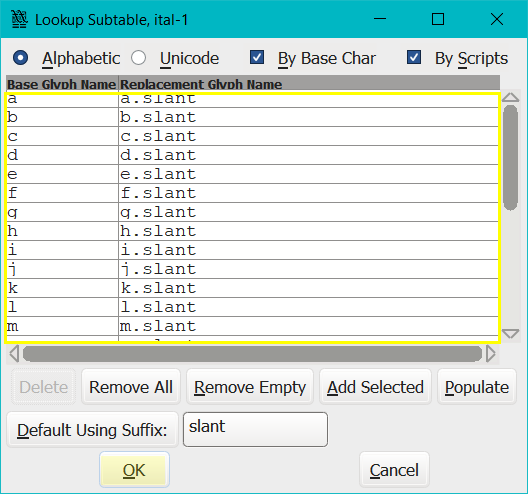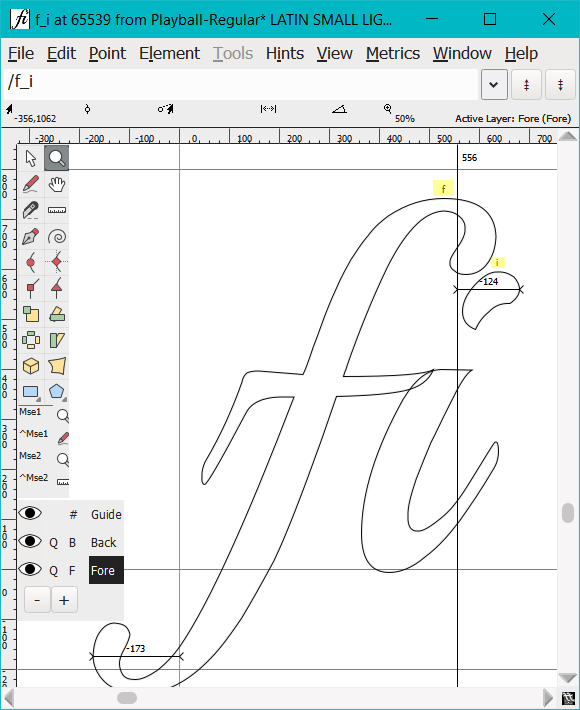
Open the output.sfd font file with FontForge.
#How to create a glyph in fontforge 64 Bit#
(*: for 64 bit Windows it's Program Files (x86), for 32 bit Windows it's Program Files) An output.sfd font file will be generated.įor Mac or Linux users, cd and execute fontforge -lang=py -script batch_import_svg.py. Select the glyphs you want to export (do not select empty ones), select "SVG" format, click "Export Artboard".Įxported individual glyph SVG files are inside an "SVG" folder, put it in a folder that also contains the batch_import_svg.py script file.įor Windows users, run C:\Program Files (x86)\FontForgeBuilds\fontforge-console.bat,* navigate to the folder using cd and execute the Python script using ffpython batch_import_svg.py. Click "File" -> "Export" -> "Export for Screens". (It doesn't matter if your glyph is partially and slightly outside its artboard.)Īfter finishing drawing the glyphs, hide "Example glyph" layer. Open font_template.ai, draw your glyphs in the "Artwork glyph" layer. Old Windows version 20200314 crashes when importing SVG files.) Usage #
#How to create a glyph in fontforge download#
( Make sure you use the latest version of FontForge, which is 20th Anniversary Edition () ( GitHub Release Page or Download Page). (Instead of downloading the files, you may also git clone or download the whole repository) sfd font file (and can optionally convert it to production font files, i.e.otf. batch_import_svg.py ( open, then Ctrl+ S / Cmd+ S to save): a python script that can import multiple SVG individual glyph files into FontForge's.If you want, you can use this file instead of (or along with) font_template.ai. font_template_single.ai ( download): Adobe Illustrator font template for a single glyph.




 0 kommentar(er)
0 kommentar(er)
